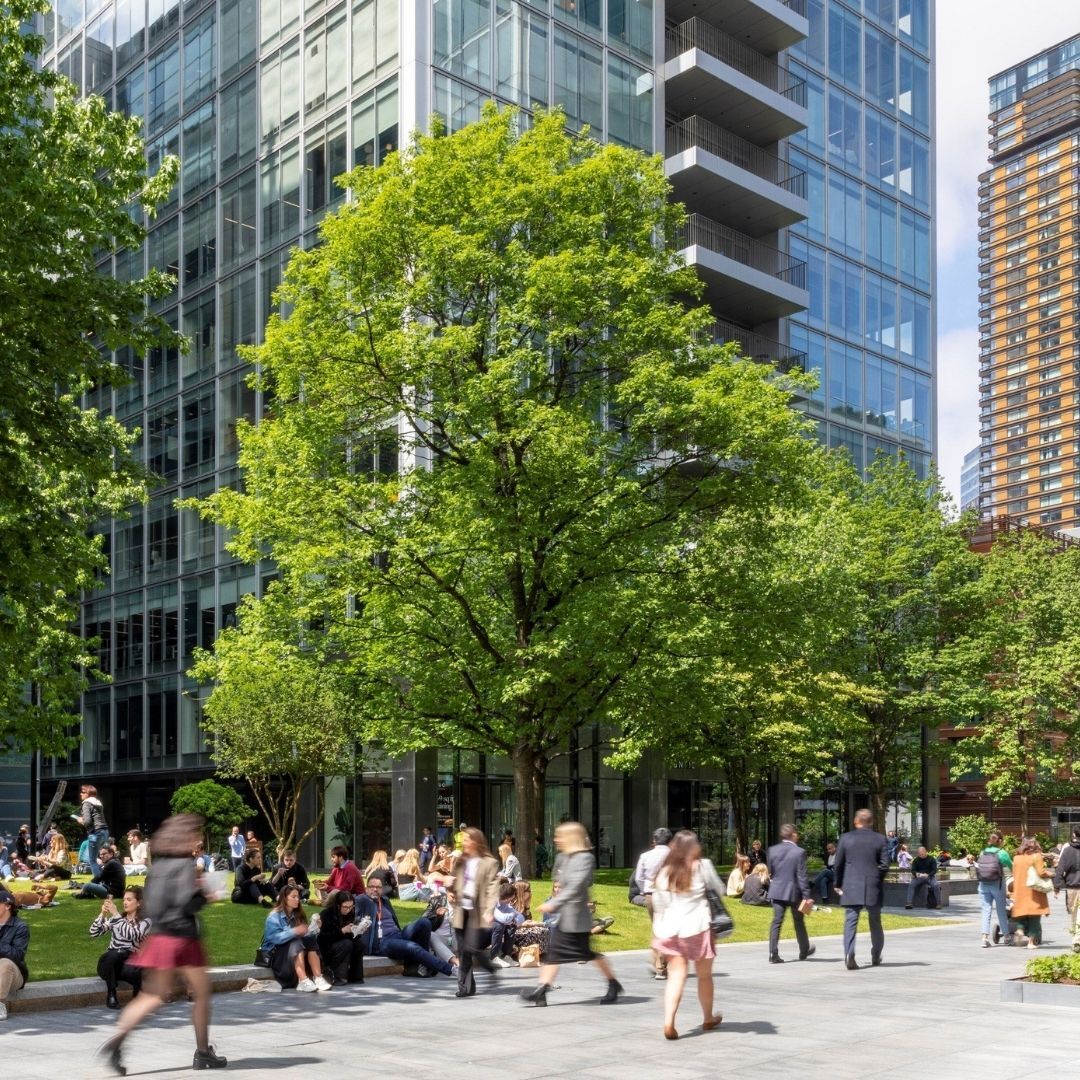Get updates from The Developer straight to your inbox Yes, please!
Bishops Square, London Borough of Tower Hamlets, for Spitalfields Development Group, with Foster + Partners and SEAM

Bishops Square lies between Bishopsgate and Old Spitalfields Market, part of a £168m development in the area that includes 3,700sqm of retail space, 72,000sqm of offices, along with apartments, community facilities, cafés and restaurants. The space combines retail and food kiosks, a reimagined shopping street, and three landscaped areas with bespoke street furniture, double-sided and platform benches in the Lawns and a sheltered outdoor performance space.
Who is on the project team? (designer, consultants, etc)
Architect – Foster + Partners
Structural Engineer: Price & Myers LLP
MEP Engineer: Waterman Group
Fire Engineer & Building Control: Sweco Ltd
Planning Consultant: DP9
Cost Consultant: Alinea Consulting
Principal Designer: CBRE
Project Management: Hart Dixon
Environmental Consultant: Ramboll
Daylight / Sunlight Consultant: EB7
Acoustic Consultant: BDP
Secured by Design: WSP
Describe the context of this project, its neighbourhood and people.
Situated in London’s East End, the Bishops Square redevelopment aims to create a welcoming public space. The area is known for its rich history and creative spirit, with industrial warehouses and market traders. The project includes three landscaped areas, providing a peaceful retreat and space for outdoor activities. It prioritises inclusivity and accessibility, with seating options that respond to different needs. Bishops Square also supports local businesses, fostering a sense of community and economic growth. Overall, the development enhances the quality of life for residents and visitors, by creating an inviting public space and increasing access to green areas. The site is located between Bishopsgate and Old Spitalfields Market. Lamb Street is to the North and Market Street is to the South, connecting the City of London with East London. This location presents an opportunity for architectural interventions that bridge the historic and modern fabric of the area. As a gateway, the site has attracted both corporate and creative industries. With the completion of the Allen & Overy building, the refurbishment of Old Spitalfields Market, and the development of surrounding sites, Spitalfields has undergone significant changes in its neighbourhood and culture. With its thoughtful design and emphasis on community, this project enhances the quality of life for both residents and visitors alike.
How does this public space bring people together, encourage inclusivity, and make a positive environmental impact to the wider place? How is the community engaged in the project?
The Bishops Square redevelopment serves as a gathering place, encouraging inclusivity and social interaction. The design incorporates various seating areas, which provide opportunities for informal gatherings, meetings, and community events. The tiered pyramid seating in the Adaptive Plaza allows for flexible seating arrangements, accommodating different group sizes and facilitating performances or exhibitions. The Urban Living Room, with its large communal tables surrounded by greenery, offers a tranquil oasis where people can come together to connect. The development significantly increases the amount of green space and enhances biodiversity by introducing a richer planting palette. Bird and bat boxes have also been added to improve the site’s ecology, creating a more sustainable and nature-friendly environment. The Lawns, with their integration of existing trees and water feature, not only enhance the aesthetic appeal but also contribute to biodiversity preservation. The design achieves a 19.2% reduction in CO2 emissions and contributes to carbon offsetting to achieve the 45% target. The development has also achieved a BREEAM rating of Very Good. Community engagement has played a crucial role in shaping the Bishops Square development. The project team conducted extensive consultations with residents, stakeholder groups, and political representatives. Meetings with various community organisations allowed for open dialogue and feedback for the design process. By actively involving the community in the decision-making process, the project reflects the needs and aspirations of the residents and fosters a sense of ownership and pride.
Please share any data or figures that support your entry about how this public space or landscape intervention has made a positive social or environmental impact, for example biodiversity, increased dwell time, flood or drainage mitigation, wellness or safety or other ecosystem services
This project has made a significant positive impact on both the social and environmental aspects of the area. In addition to increasing the amount of green space available for local people, the project has also reduced the existing hard landscape areas and increased soft landscape areas. This has not only improved the aesthetics of the surroundings but has also provided a tranquil urban oasis in the heart of Bishops Square. From an environmental perspective, the project has contributed to increased biodiversity in the area. The Lamb Street building design includes a biodiverse green roof incorporating plant species native to the local area and the British Isles. The natural habitats created are designed to support a variety of plants, birds, animals, and invertebrates. The biodiverse design is approved by Buglife (the invertebrate Charity). By incorporating existing mature trees and retaining the water feature, Charnel House, the development has created a habitat for various plant and animal species. The lawns, which have been significantly expanded, offer a The square incorporates sheltered outdoor performance space with adaptive seating areas. area during summer days, and provide a space for relaxation and recreation. In terms of safety and wellness, the project has incorporated various features to ensure the comfort and accessibility of the public space. The provision of seating with backrests, armrests, and spaces for wheelchair users and pushchairs promotes inclusivity and convenience. Furthermore, the design includes level threshold access to retail entrances and dropped flush kerbs to the lawned areas, allowing for easy and equal access for all individuals.
Sign up to our newsletter
Get updates from The Developer straight to your inbox
Thanks to our organisation members
© Festival of Place - Tweak Ltd., 124 City Road, London, EC1V 2NX. Tel: 020 3326 7238